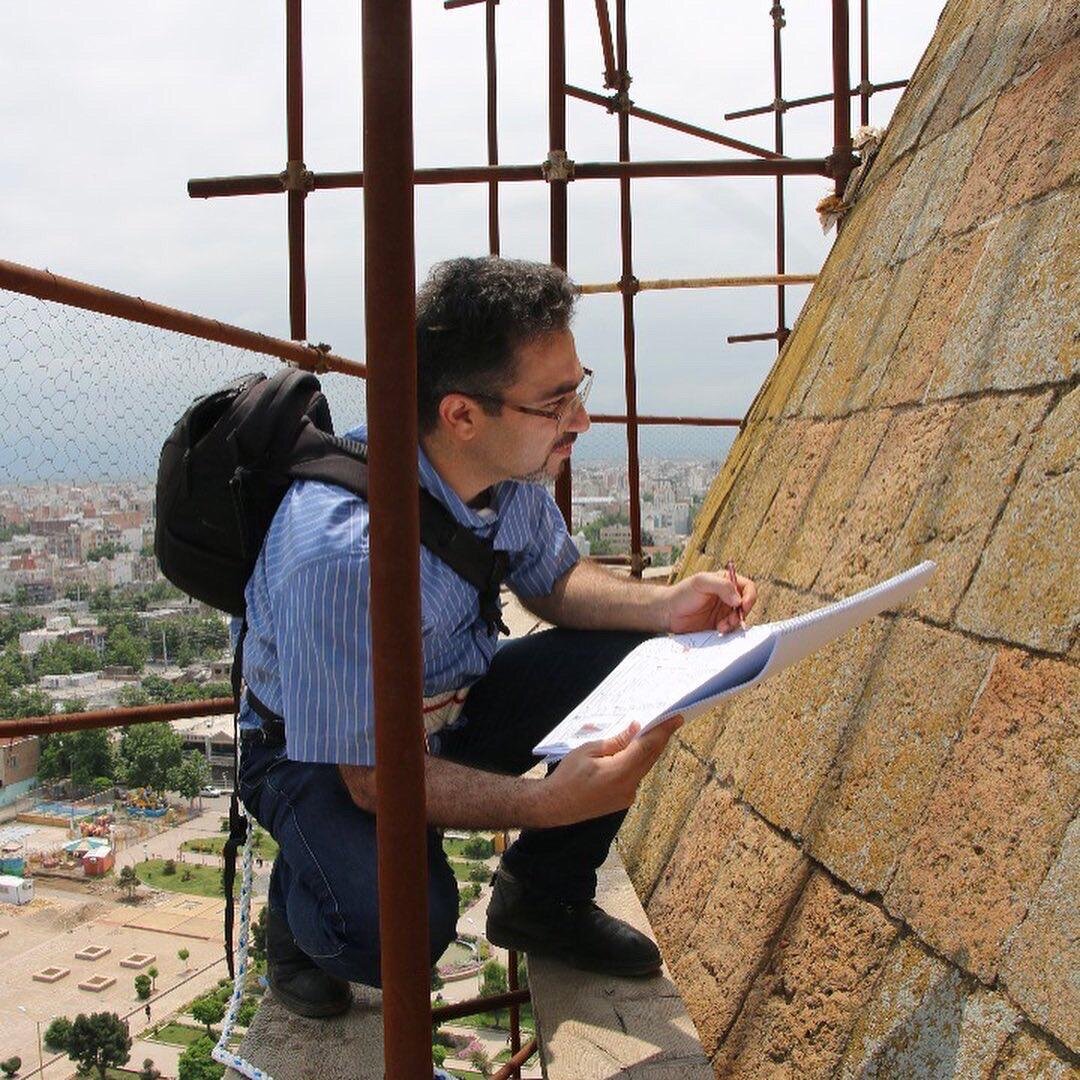UNESCO-listed Gonbad-e Qabus to undergo restoration

TEHRAN - The director of the Gonbad-e Qabus World Heritage site has announced that the government has allocated part of the approved budget for combating vegetation growth on the conical dome of the 1,000-year-old brick tower.
Abdolmajid Nourtaghani stated that an amount of 230 billion rials (some $385) was required to boost the structure’s strength and carry out emergency restoration work. “Of this amount, the government approved 120 billion rials, and so far, 70 billion rials have been allocated.”
Speaking on Sunday, Nourtaghani provided an update on the status of this UNESCO-registered site. He said that following the 2019 floods and the subsequent growth of weeds on its dome, the Ministry of Cultural Heritage issued orders for scaffolding installation and emergency restoration.
Nourtaghani added that after a weed removal project, it was decided to address the issue of vegetation growth fundamentally. Consequently, the preparation of a restoration plan for Gonbad-e Qabus has been included in the new program of the ministry. The restoration study for the exterior layer of the dome was prepared in collaboration with professors from Shahid Beheshti University.
He emphasized that combating vegetation growth, assessing the structure’s strength, and carrying out emergency restoration are among the priorities for this monument, which will be undertaken with the assistance of expert restorers and scholars.
Elsewhere in his remarks, Nourtaghani announced that a selected contractor is to commence the restoration work. “Bricks that are less damaged will be cleaned and reinstalled, while those severely damaged and beyond repair will be replaced with new, similar bricks.”
The director also noted that the new bricks, produced as lab samples, will be traditionally made, approximately 2,000 in number, using local soil from Gonbad-e Kavus, and will be fired in a kiln specifically built for this purpose.

He further mentioned that the necessary materials (semi-cooked and semi-ground gypsum) for brick installation will be produced in a separate kiln, using gypsum stone sourced from Semnan province.
Nourtaghani explained that the western section of the dome, containing 1,500 bricks, will be inspected, cleaned, and re-grouted. Most of these bricks were installed during the restoration work in the 1960s and, if found deteriorated, will be replaced with new, rooted bricks.
He also highlighted that part of the allocated funds will be used for studies of the overall structure of the tomb tower, including detailed technological assessments and necessary tests that require scaffolding.
The director added that an additional 150 billion rials are needed to complete this round of restoration.
Experts say that growing plants on the Qabus tower is not a new issue and is witnessed in all brick buildings across the country, especially in northern provinces, due to their climatic conditions.
Located in Golestan province, Gonbad-e Qabus is of high architectural importance as an exemplar and innovative design of early Islamic-era architecture.
Visible from great distances in the surrounding lowlands near the ancient Ziyarid capital, Jorjan, the 53-meter high Gonbad-e Qabus dominates a modern town of the same name laid out around its base in the early 20th century.
Its hollow, cylindrical shaft of unglazed fired brick tapers up from an intricate geometric plan in the form of a ten-pointed star to a conical roof. Two encircling kufic inscriptions commemorate Qabus Ibn Voshmgir, Ziyarid ruler and literati as its founder in 1006 CE.
As mentioned by UNESCO, the monument bears testimony to the cultural exchange between Central Asian nomads and the ancient civilization of Iran.
AM
Leave a Comment